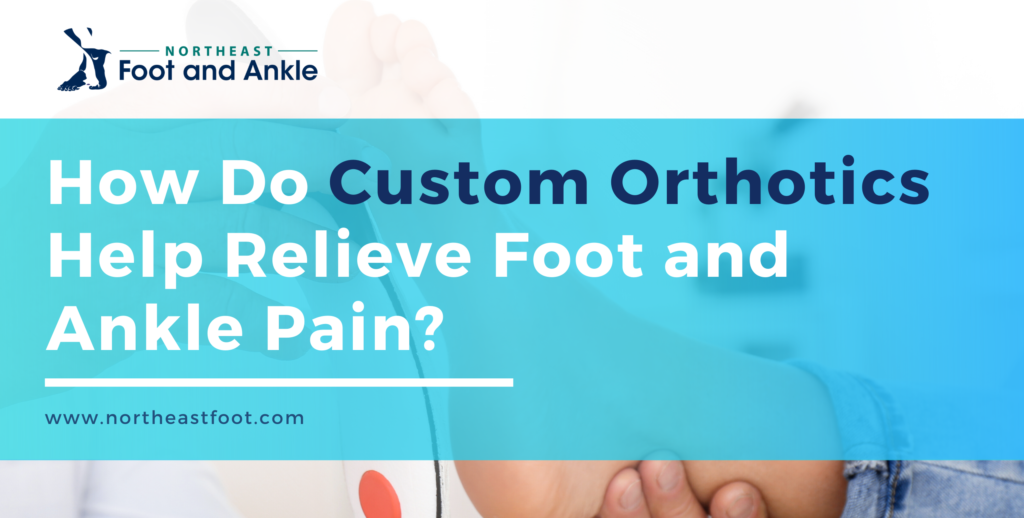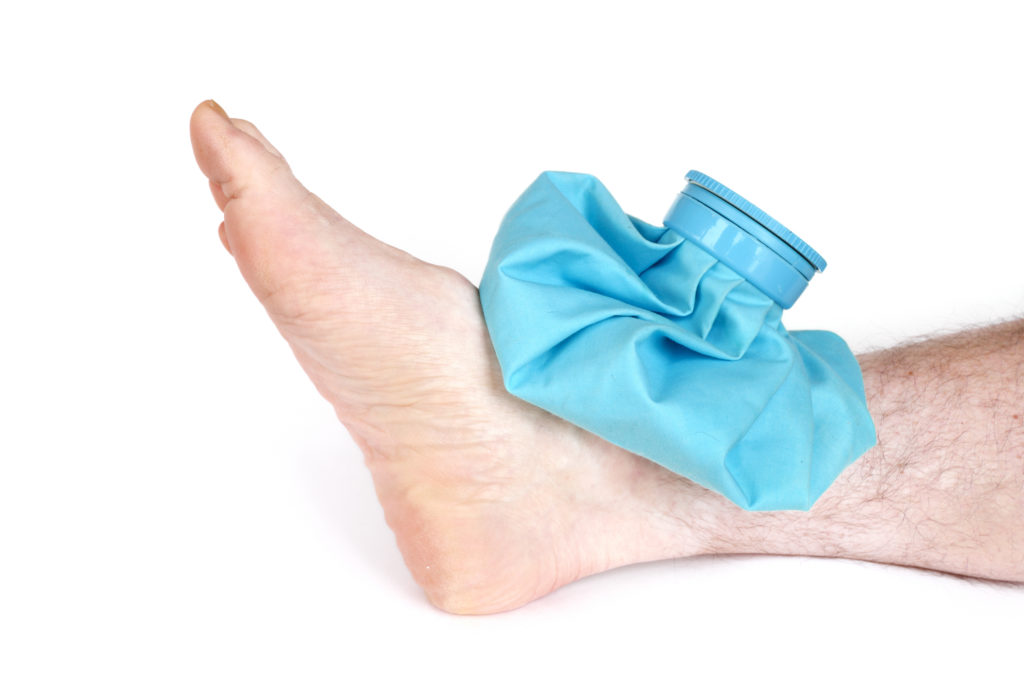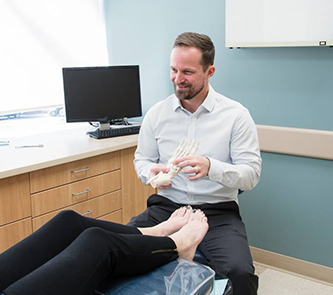How Do Custom Orthotics Help Relieve Foot and Ankle Pain?
Custom orthotics are a frequent consideration for many forms of foot pain, largely because so many causes of discomfort can center around structural abnormalities within the foot itself.
If you have heard the term come up in treatment discussions, it is more than fair that you may have a few questions. How do custom orthotics work? What would having them mean? Why not just purchase some inserts from the store?
They’re questions we’re happy to answer, because we believe every patient should have a full understanding of all their treatment options. And if you don’t receive answers to your questions here, please never hesitate to bring up your concerns to us—for custom orthotics or any other matter!
How do custom orthotics work?
Imagine, for a moment, a wobbly table or chair. The force that is placed on it ends up misdirected, not going where it should (and potentially spilling your drink).
A similar case can happen in a foot with an abnormal structure, such as with flat feet, high arches, or other conditions. However, the foot has a much more complex build than most furniture, and moves in a wide variety of ways.
A structural abnormality in the foot can lead to excess pressure being improperly distributed into a certain area, which can strain the bones, tendons, and other tissues there. And this can happen with every step you take, always bearing your weight as you move. Eventually, problems such as plantar fasciitis, Achilles tendinitis, and other painful injuries can develop due to the repeated impacts of misplaced forces.
Custom orthotics may be used to redistribute weight properly across the feet again, taking excess pressure off of troubled areas. This can help injured areas recover, as well as help prevent similar situations from happening again.

Why “custom” orthotics? Why not just buy some basic orthotics?
Think back to that wobbly table again. Suppose that someone has stuffed some napkins under the short leg. That might work a little, but it rarely ever works completely.
Now, back to a foot with a much more complex design. In most cases, the goal for relieving pain and discomfort is to help the foot achieve proper balance and alignment as best as possible. Even a slight imbalance can have significant negative effects.
Custom orthotics are prescribed specifically to the shape of a patient’s foot, and their individual needs for cushioning and support. A pair of custom orthotic inserts is made for one person only, whereas the types you see in pharmacies and supermarkets have more of a general idea of support.
There are some cases where a pre-fabricated set of orthotics may be a suitable option for a patient, but these tend to be uncommon and only for more mild cases. Odds are high that pre-fab orthotics will not have as much of an effect on your comfort as custom orthotics would. In some cases, they might even cause more of an imbalance.
How long would I have to wear custom orthotics?
While custom orthotics can provide corrective support, they do not actually “fix” the shape of someone’s foot structure.
What this means is that, barring corrective surgery, custom orthotics are almost always a long-term form of treatment. You may end up using them for the rest of your life—or at least not want to be without them.
The shape of your foot may still change over time, for better or worse. Also, while custom orthotics are built to last quite a while, they will still generally degrade with use over time. We recommend periodic evaluations of your orthotics—usually once per year—to adjust, refurbish, or replace them as necessary.
What other options might exist for my foot pain?
Custom orthotics might be recommended wholly by themselves for treatment, but other treatments might be recommended instead of or in addition to them. It all depends on your individual needs.
Additional or other treatments we may recommend include (but are not limited to):
- Rest and cold therapy.
- MLS Laser Therapy to accelerate healing and increase pain relief.
- Physical therapy, in the form of exercises and stretches to condition supporting tissues.
- Steroid injections to address pain and/or inflammation.
- Changes in footwear.
- Changes in activity or workout routines.

In some cases, surgery may be considered. However, this only happens when it is clear that non-surgical options would not be enough to properly address the problem. If surgery becomes an option, we will fully discuss the ins and outs of the procedure with you and answer all questions you may have, all to ensure you have all the information you need before making a decision moving forward.
Find the Help You Need in Portsmouth and Nashua
Whether your foot or ankle pain is likely a matter of structure or not, one thing is for certain: persistent pain is never normal, and something should be done about it!
Please don’t keep holding out, waiting for things to get better. Odds are, if you’ve already had this pain for some time, things will only become worse the longer you wait to take the problem head on.
If your problem is centered on heel pain, we have a free guide that can tell you even more about potential causes, treatments, and prevention. But whatever the problem may be, we are here and ready to help.
Call (603) 431-6070 to schedule an appointment at one of our offices in Portsmouth or Nashua. If you prefer to contact us electronically instead, simply fill out our online form anytime and a member of our staff will reach out to you during our normal office hours
Pay Your Bill
Make a payment online through our payment portal or Care Credit!
Portsmouth Office
14 Manchester Square, Suite 250
Portsmouth, NH 03801
Nashua Office
17 Riverside Street, Suite 205
Nashua, NH 03062
Website Hosted by SC Digital



